How and how to glue roofing material?

To glue the roofing material with high quality, you should choose the right glue. Today, the market offers different types of bitumen mastic, which can be used when installing a soft roof or when waterproofing a foundation, if you choose the appropriate composition of such an adhesive.
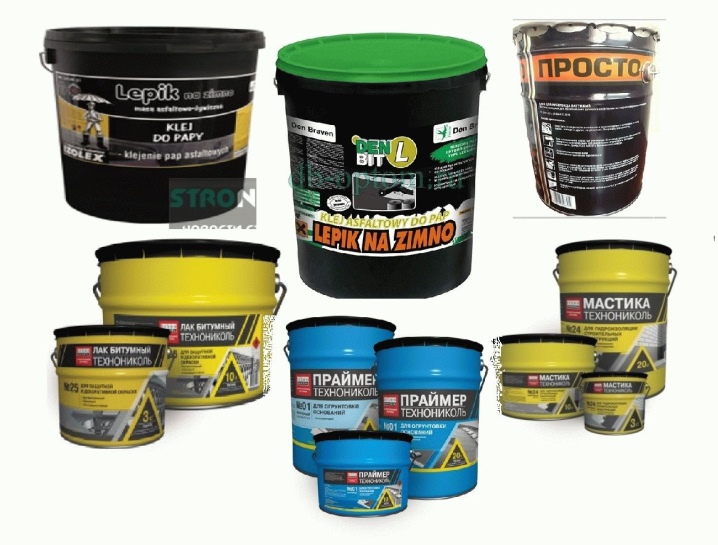
What is glue?
To fix the roofing material, you can use hot or cold bitumen mastic. When using cold technology, you do not have to warm up such a composition. The cold mastic for gluing roofing material includes bitumen and a solvent, which can be:
- diesel fuel;
- kerosene;
- petrol.
Such petroleum products dissolve bitumen well if the components are taken in a ratio of 3: 7. The heated bitumen should be dissolved, only in this case the glue will remain liquid after cooling.
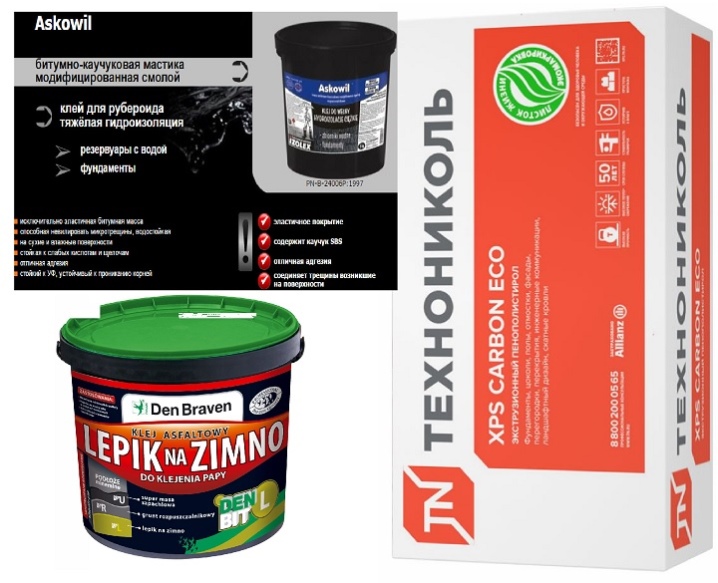
Such a mastic is used for sticking small volumes of roofing material on the roof or when laying tiled roofing material during the repair of a soft roof. The cold composition is quite expensive, so it is not used to repair the entire roof. It is well suited when you need to glue pieces of roofing material together, eliminating deformations and cracks in several places of an already finished soft roof. At the same time, it is easier to work with a cold composition, since there is no need to heat the glue.
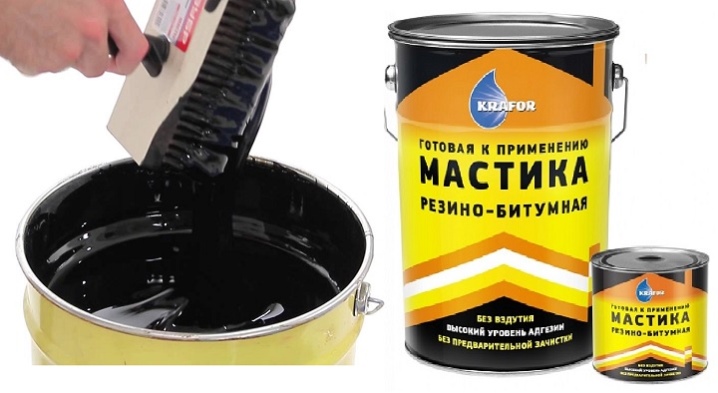
It is required to use hot compounds only in a heated state. The bitumen is heated over low heat, additives and oil are added to it. This technology is usually used when repairing large areas, when a soft roof is glued to concrete on a flat roof, or when a foundation is waterproofed.
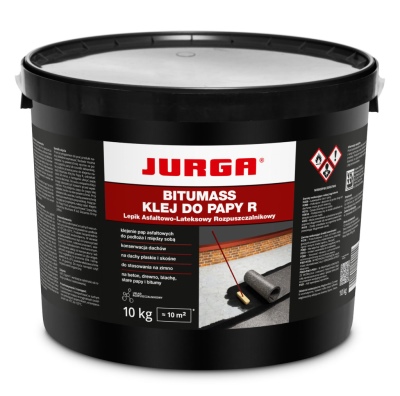
Today, manufacturers offer ready-made adhesives for gluing roofing material using cold technology. They do not need to be warmed up before use, which greatly simplifies the work process.
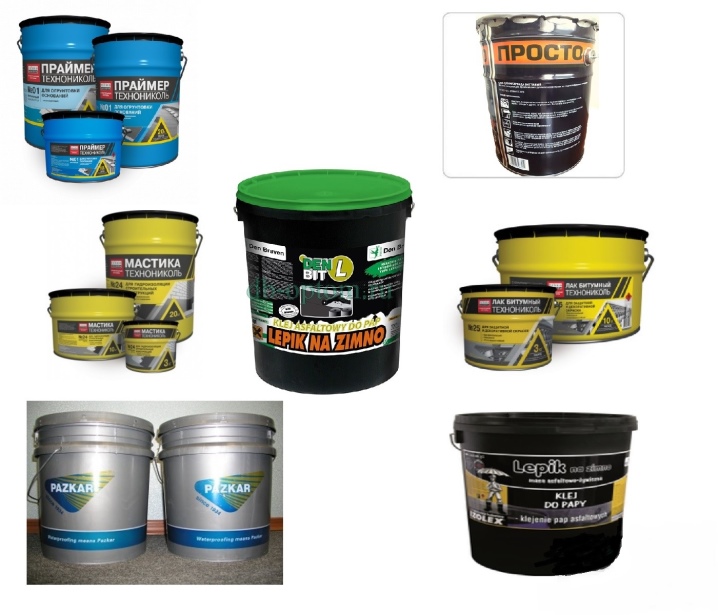
Manufacturers
There are many Russian and foreign manufacturers of bituminous adhesives on the modern building materials market. One of the leading companies in the production of soft roofing and materials for its installation is Technonikol. She started working in Vyborg in 1994, when the first production line was launched. Today this manufacturer supplies its products to 95 countries.
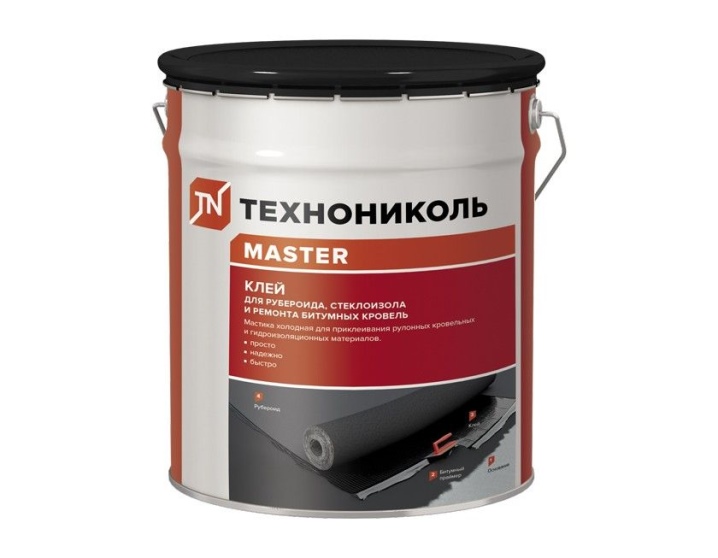
In the cold mastic "Technonikol", bitumen is used in the manufacture, to which solvents, additives and fillers are added. You can use this type of glue for roofing materials of different brands:
- RCP;
- RPP;
- RKK;
- glass insulation and other types of soft roofing.
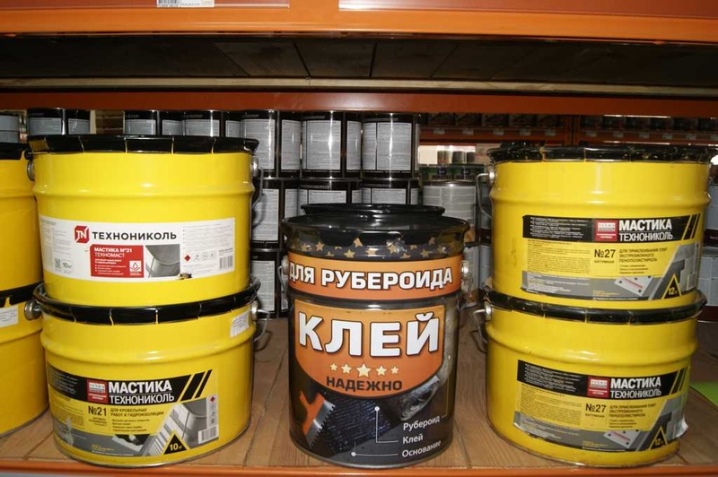
The adhesive composition "TechnoNIKOL" allows you to glue the roofing material on concrete, cement-sand and other surfaces. You can work with this glue all year round. It can withstand negative temperatures down to -35 degrees.
Although the consumption of glue is quite large for 1 square meter, the cost is low, which averages 500-600 rubles. for a 10 liter container, and the high quality of the glue compensates for this disadvantage.

Another bitumen mastic produced by the Russian company "Technonikol" - AquaMast. It is a multi-component compound that is excellent for quick repair of soft roofs and waterproofing of various building materials:
- bricks;
- wood;
- concrete;
- metal structures.
You can work with this bituminous glue in the temperature range from -10 to +40 degrees. The price of a 10-liter bucket is about 600 rubles.
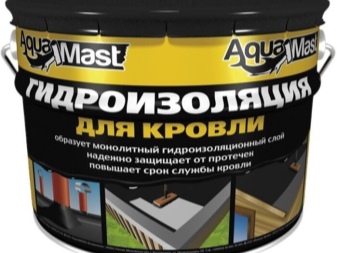
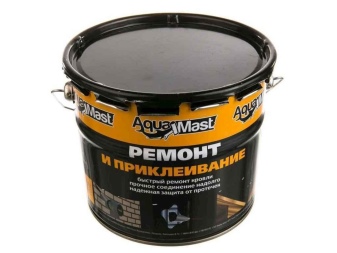
KRZ - manufacturer of soft roofing in Ryazan, which supplies the market with high-quality roofing material of various types and materials for its gluing.
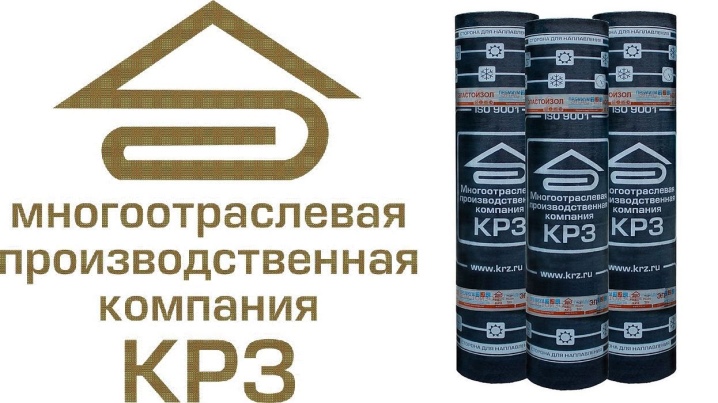
In addition to domestic manufacturers, the Russian market is represented by Polish-made mastics from one of the world's leading manufacturers of adhesives of various types, which are produced under the Tytan brand.
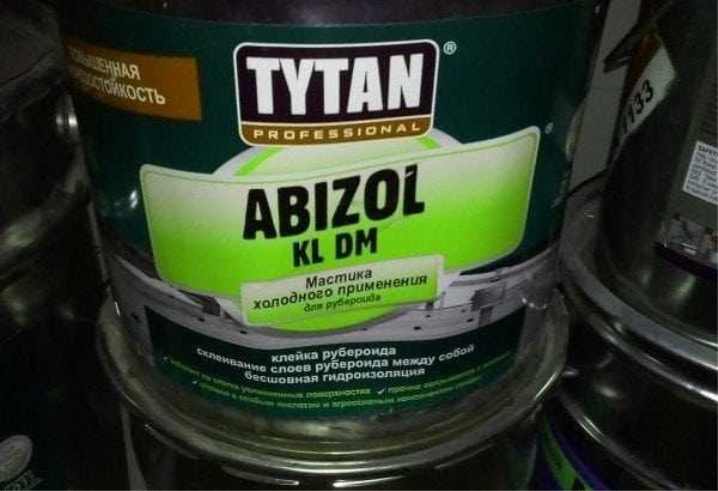
Polish cold bitumen mastic Abizol KL DM Tytan is similar in performance to TechnoNIKOL glue and can withstand temperatures as low as -35 degrees. It costs 2.5 times more. For a container weighing 18 kg, you will have to pay an average of 1800 rubles.
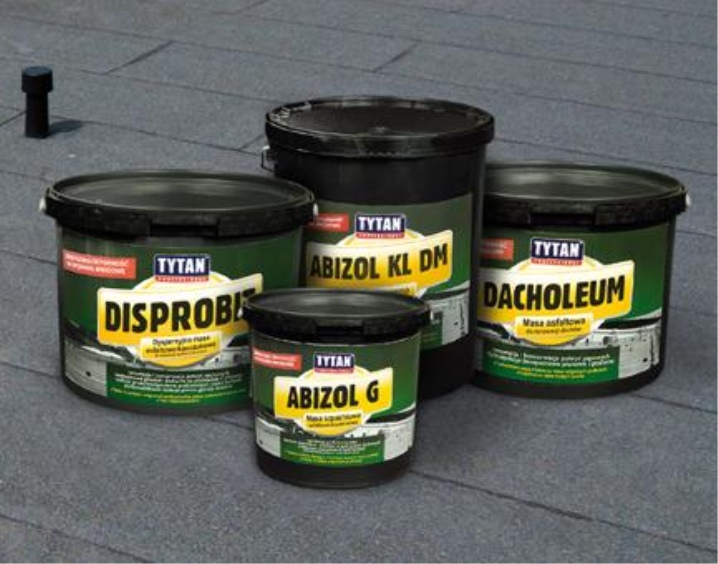
Instructions for use
Using ready-made bituminous mastic, you can glue roofing material to various surfaces without heating the adhesive composition with your own hands:
- to slate;
- on concrete;
- to metal;
- to the tree;
- on a brick against the wall;
- to iron when repairing a metal roof.
Before buying glue, you need to immediately calculate the consumption of such material, taking into account how much it will be required to waterproof the roof, walls or foundation. Typically, the mastic is sold in 10 kg buckets. The calculation is carried out taking into account the total surface area on which the glue will be applied, and the characteristics of the material from which it is made.
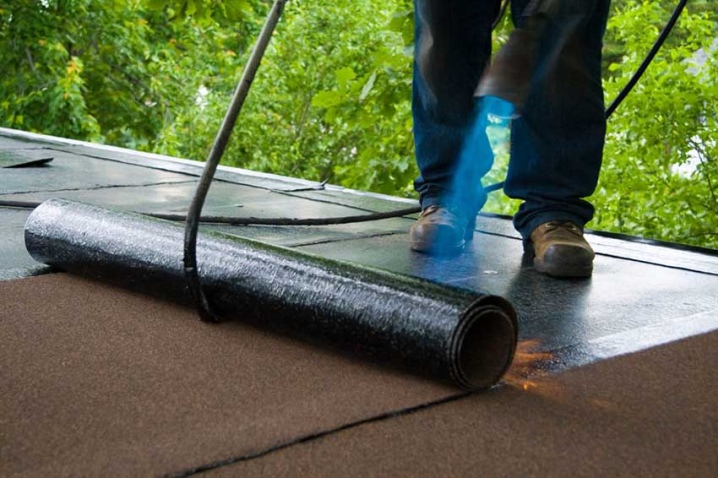
First you need to clean the plane from dust and debris or old roofing material. When gluing roofing sheets to concrete, it is necessary to pre-prime the canvas to improve the adhesion of the material to the concrete surface. As a primer, you can use heated bitumen, which is dissolved with diesel fuel or gasoline. You can use ready-made glue as a primer, having purchased it in the right amount.
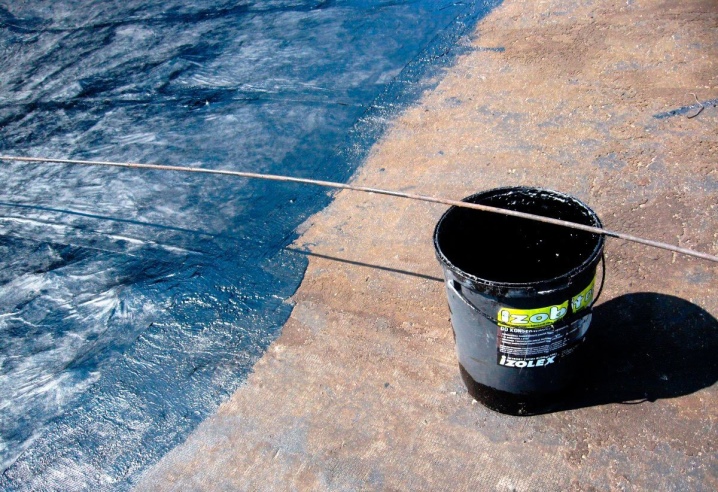
When repairing a wooden roof, you need to make its crate using an edged board, and then carefully seal all the cracks. Then the roll of roofing material should be cut into sheets according to the size of the area on which it will be glued. When cutting roofing material for the roof, it is necessary to create a margin of about 20 cm on each side to create an overlap.
If the roof slope is not more than 3 degrees, then roofing material can be laid both along and across. If there is a deviation of the angle from the standard values on a flat roof, then the roofing material should be laid along the slope so that water from rain and melted snow does not stagnate on the roof. On pitched roofs, roofing material is always laid along the slope.
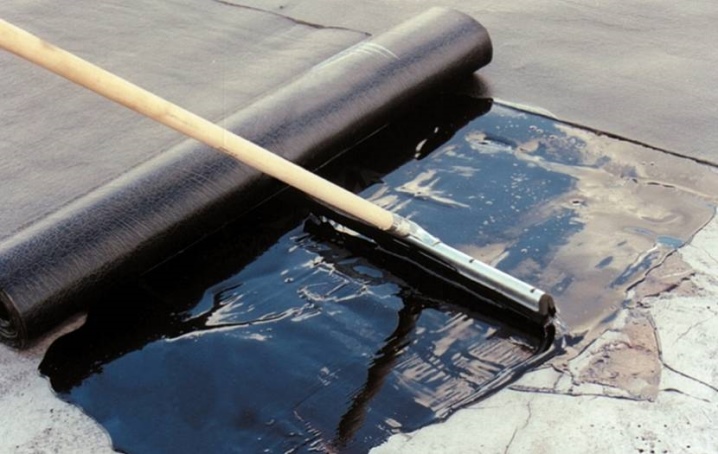
The prepared surface must be lubricated with bituminous glue and immediately start laying the cut sheets, making an overlap of 10 cm. When rolling roofing material, use a metal roller, which can be made from a piece of pipe.
The next layer is glued using the same technology, offset to the side by half the width of the sheet. This allows you to create a soft, sealed coating that will not have joints or crevices. It is important to carefully glue the joints.
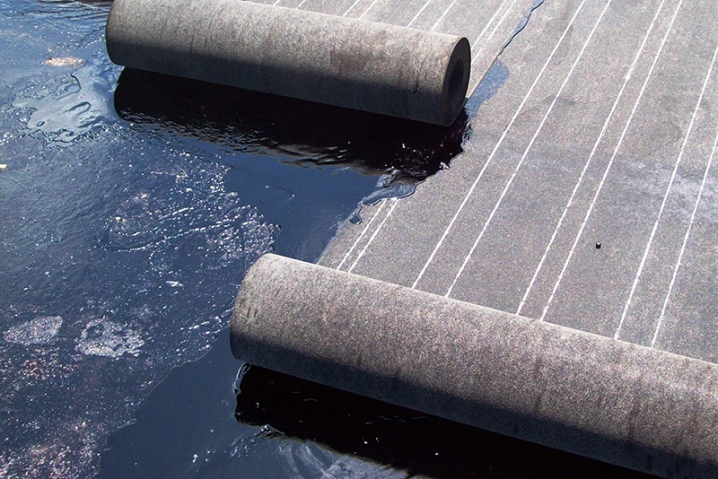
When the last layer is laid, it will be necessary to carefully drive out air bubbles from the created roofing material covering, walking over it with a metal roller. All joints should be thoroughly rolled so that they do not disperse later due to poor gluing and do not deform the soft roof.
Cold bituminous adhesives usually dry completely in a day in good weather and all the manufacturer's recommendations for their use are followed.
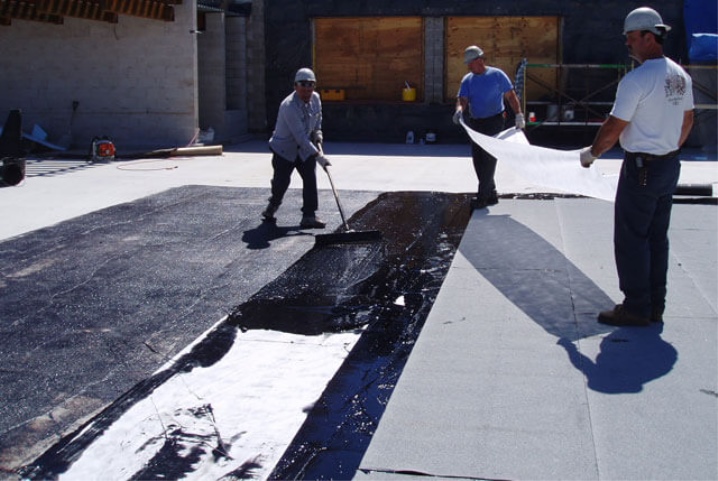
How to dilute?
If this bituminous glue has thickened, it can be thinned by choosing the right solvents. Modern manufacturers add various additives and fillers to bitumen adhesives that increase the elasticity of the adhesive layer:
- rubber;
- polyurethane;
- rubber;
- oil;
- latex.
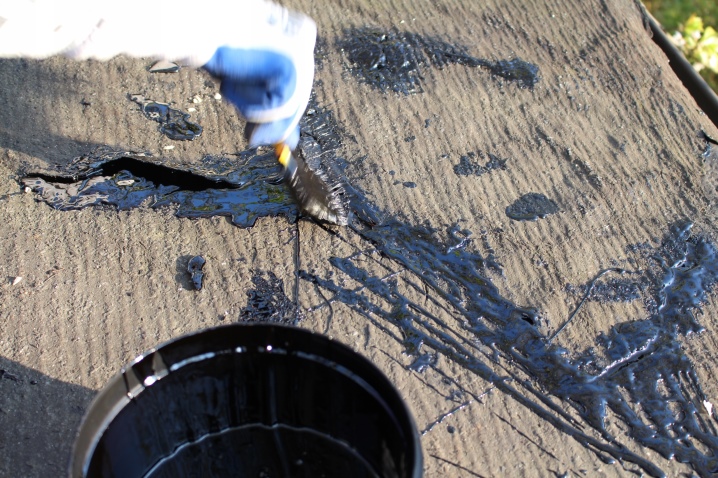
Thickened adhesives made on the basis of bitumen can be diluted with universal solvents:
- low-octane gasoline;
- white spirit;
- kerosene.
Before choosing the optimal type of solvent for rubber-bitumen glue, one should proceed from the basic technical characteristics of the glue so as not to disturb them when dissolved.
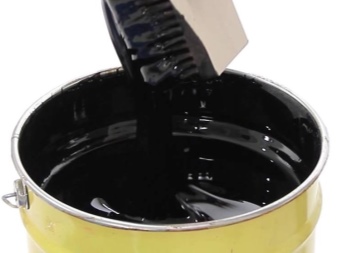
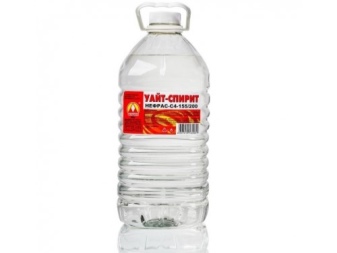
When dissolving bituminous glue, you can give it the desired technological characteristics by adding certain components.
- If you need an anti-corrosion mastic that will be applied to metal surfaces, you need to add machine oil to the oil-bitumen glue. In this case, the mixture that is planned to be used for application to metal underground utilities will not harden. The film obtained after applying such a composition to the surface of the material will remain elastic for a long time. It is possible to use such a mixture only when carrying out waterproofing on pipelines and heating systems.
- When working with the roof, in addition to the solvent, it is recommended to add rubber crumb rather than oil to the bitumen glue. This will ensure the durability and strength of the adhesive by improving its elasticity. In this case, the adhesive layer, after hardening, will have the required strength and will be able to withstand increased mechanical loads and impacts.
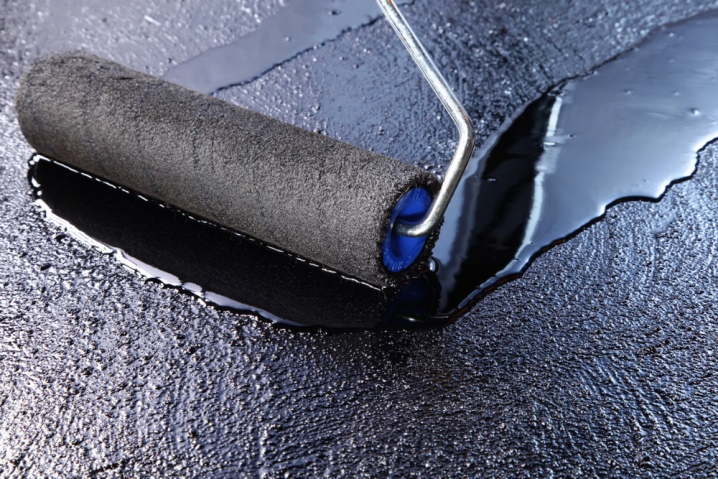
Having correctly selected the ready-made bituminous glue for installing roofing material, you can independently not only repair the soft roof, waterproof the foundation or anti-corrosion treatment of the metal pipeline, but also install the soft roof on your country house, shed or garage without extra financial costs.
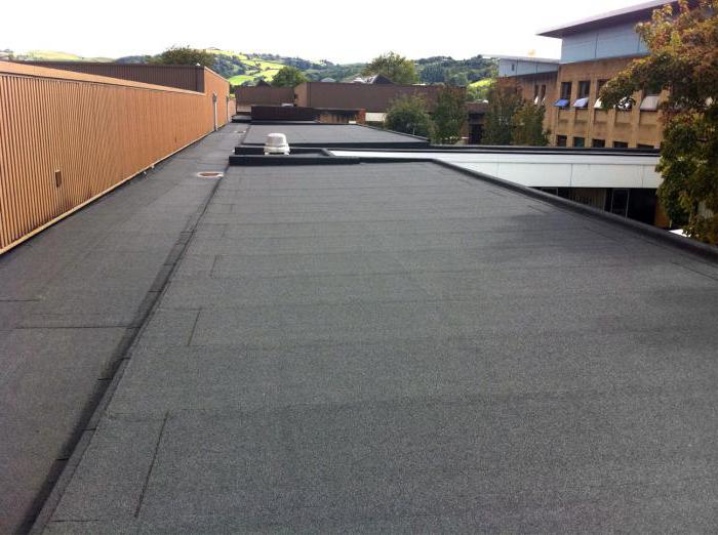













The comment was sent successfully.